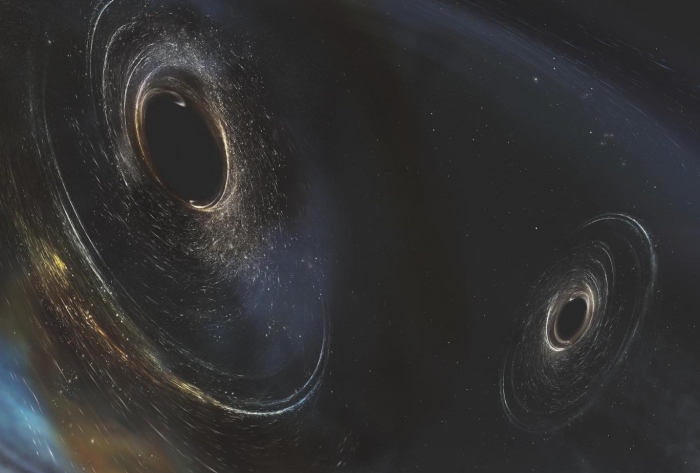Scientists "heard" the wave by using laser beams sent through two perpendicular pipes which are nearly 2,000 miles apart in the US. That equipment lets them see the wobbles as spacetime is distorted – and glimpse at the nature of black holes.
Together they make up the Laser Interferometer Gravitational Wave Observatory (Ligo).
According to the astronomers, the newly-formed black hole is 49 times the mass of the sun and is three billion light years away from Earth.
Gravitational waves were first observed in September 2015 and the second detection occurred three months later.
The third detection, which the astronomers labelled GW170104, was made on January 4 2017.
The astronomers believe their latest finding "provides clues about the directions in which the black holes are spinning".
"Black holes are beautifully simple, you just need two numbers to describe them completely: a mass, how much they bend space-time, and a spin, how much space-time swirls about them," said Dr Christopher Berry, of the University of Birmingham, one of the researchers in the project.
"But it takes lots of hard work to measure these from our data.
"We now have wonderful mass measurements, and are starting to uncover details about the spins of these black holes, which could reveal hints about how they formed."
The researchers say their discovery adds further evidence to support Einstein's general theory of relativity and confirms the existence of previously unknown black holes.
The Ligo is made up of two identical detectors, called interferometers, carefully constructed to detect tiny vibrations from passing gravitational waves that cause minute changes in the lengths of its pipes.
As these waves spread out, they compress and stretch the very fabric of the universe.
More than a 1,000 scientists from the Ligo Scientific Collaboration were involved in the project along with an additional 280 researchers from the European-based Virgo Collaboration.
The team tested the idea that gravitational waves might travel at different speeds depending on their wavelengths, a phenomenon called dispersion.
They did not see evidence of dispersion, but if they had, it would have contradicted Einstein's theory.
Scientists hope gravitational waves will offer a completely different view of the universe, allowing them to study events that might be hidden from traditional optical and radio telescopes.
"We have further confirmation of the existence of stellar-mass black holes that are larger than 20 solar masses, these are objects we didn't know existed before Ligo detected them," MIT researcher David Shoemaker said.
"It is remarkable that humans can put together a story, and test it, for such strange and extreme events that took place billions of years ago and billions of light-years distant from us.
"The entire Ligo and Virgo scientific collaborations worked to put all these pieces together."
More about: #blackhole #science
















































